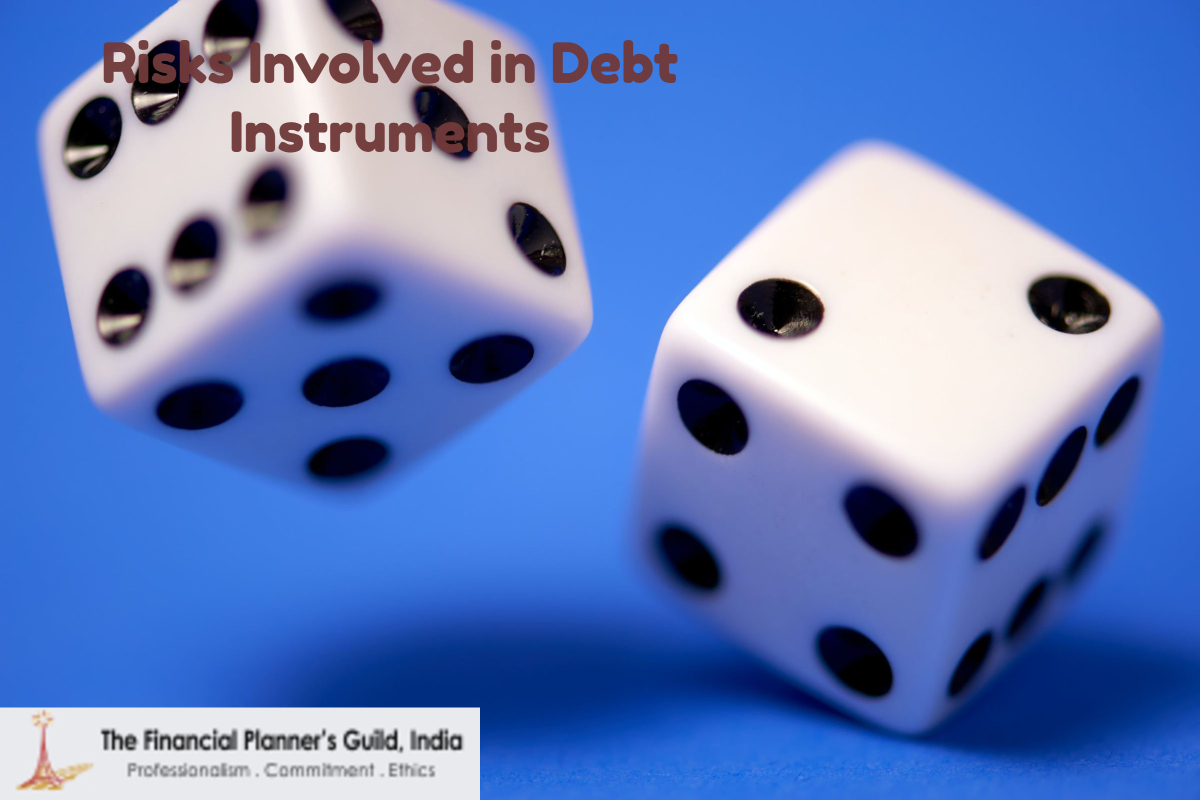
Investors normally are under the impression that debt instruments are safe and there are no risks involved in investments in debt instruments. They believe that it is only equity investments that are risky. The fact is that debt instruments are also risky and in this article we will talk about a few of the risks associated with debt investments.
Interest Rate Risk
Interest rate risk is the risk that an investment’s value will change with a change in the interest rates. It is a known fact that the price of a bond will change in the opposite direction to the change in the interest rate. When the interest rates fall, the price of the bond goes up and vice versa. The investor faces the risk of a fall in the price of the bond that he currently holds, if the interest rate goes up in the market. This risk in the fall of the bond price because of rise in the market interest rate is known as interest rate risk and is amongst the major risk that is faced by an investor invested in debt securities.
Reinvestment Risk
Reinvestment risk is the risk that the money received as interest and principal and which are available for reinvestment can be reinvested only at a lower interest rate as compared to the investments made earlier. Take for e.g., Mr Anand had invested in a bond yielding 9% per annum two years back and the bonds are maturing now. The bonds which are currently available in the market yield a return of only 7%. Now, the investor faces reinvestment risk because he was getting 9% interest on the existing bond whereas if he reinvests the proceeds of the existing investment, he would get returns at 7% only.
Default Risk
Default risk is the risk that the issuer of the bond will not be able to honor the terms and conditions of the bond with regard to the payment of interest and principal. Government bonds have the least amount of default risk whereas bonds issued by corporate houses carry the highest risk though they might offer slightly higher interest as compared to Government bonds.
Liquidity Risk
Liquidity risk is the risk that the investor will have to sell the bond below the indicative price of the bond. The risk that emanates from the lack of marketability of the investment. The liquidity risk will be greater when there is a huge difference between the prices at which a dealer is willing to buy a security and the price at which a dealer is willing to sell the security.
Exchange Rate Risk
Exchange rate risk is the risk of receiving less of the domestic currency when investing in a debt instrument that makes the payment in a currency other the domestic currency of the investor. The cash flows in the investor’s domestic currency are dependent on the exchange rate that is prevalent at the time of receiving the payments from the issuer of the debt instrument. Take for example, an investor in India purchases a bond US dollar (USD) denominated bond. The investor would be concerned about the depreciation of USD against Indian rupee (INR), since if the USD depreciates against the INR, then the investor would receive less INR.
Risk of Inflation
Inflation risk is the risk that the investor faces because of the fall in value of the inflows that he receives when he holds a debt instrument. The debt instruments normally give a fixed rate of return and the value of money falls due to inflation effect. For example, Ramesh purchases a bond with a coupon rate of 9% and the inflation rate is 5%. The purchasing power in this case has increased by only 4% and not by 9%. This is especially true for a growing economy like India that faces high inflation rates.
Hence, debt instruments also have risks and it would not be prudent to think that it is only equity instruments that are risky and debt instruments are safe with no risk.
FPG India ©2024. All Rights Reserved.
Designed & Developed by W3M Technoz